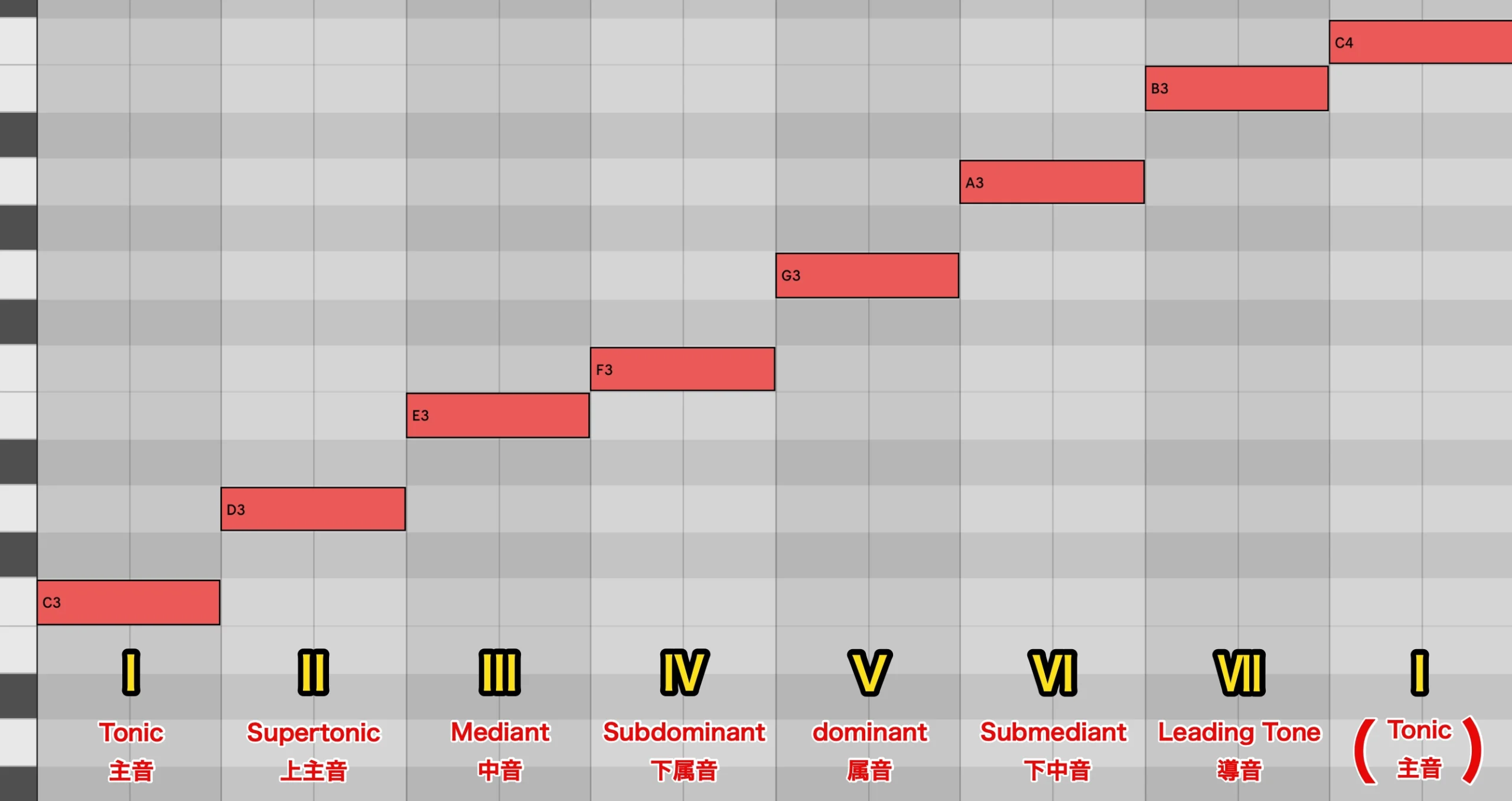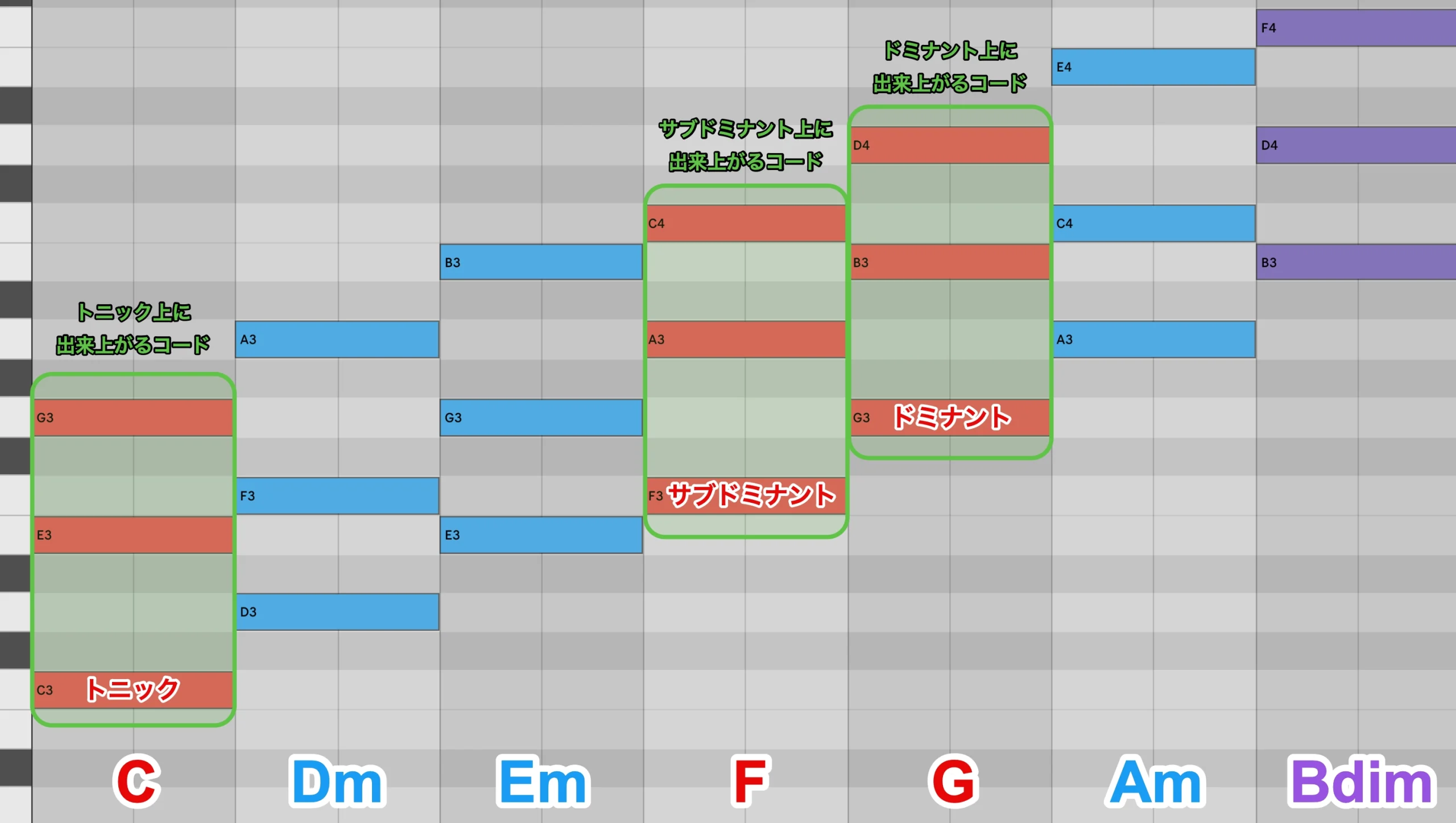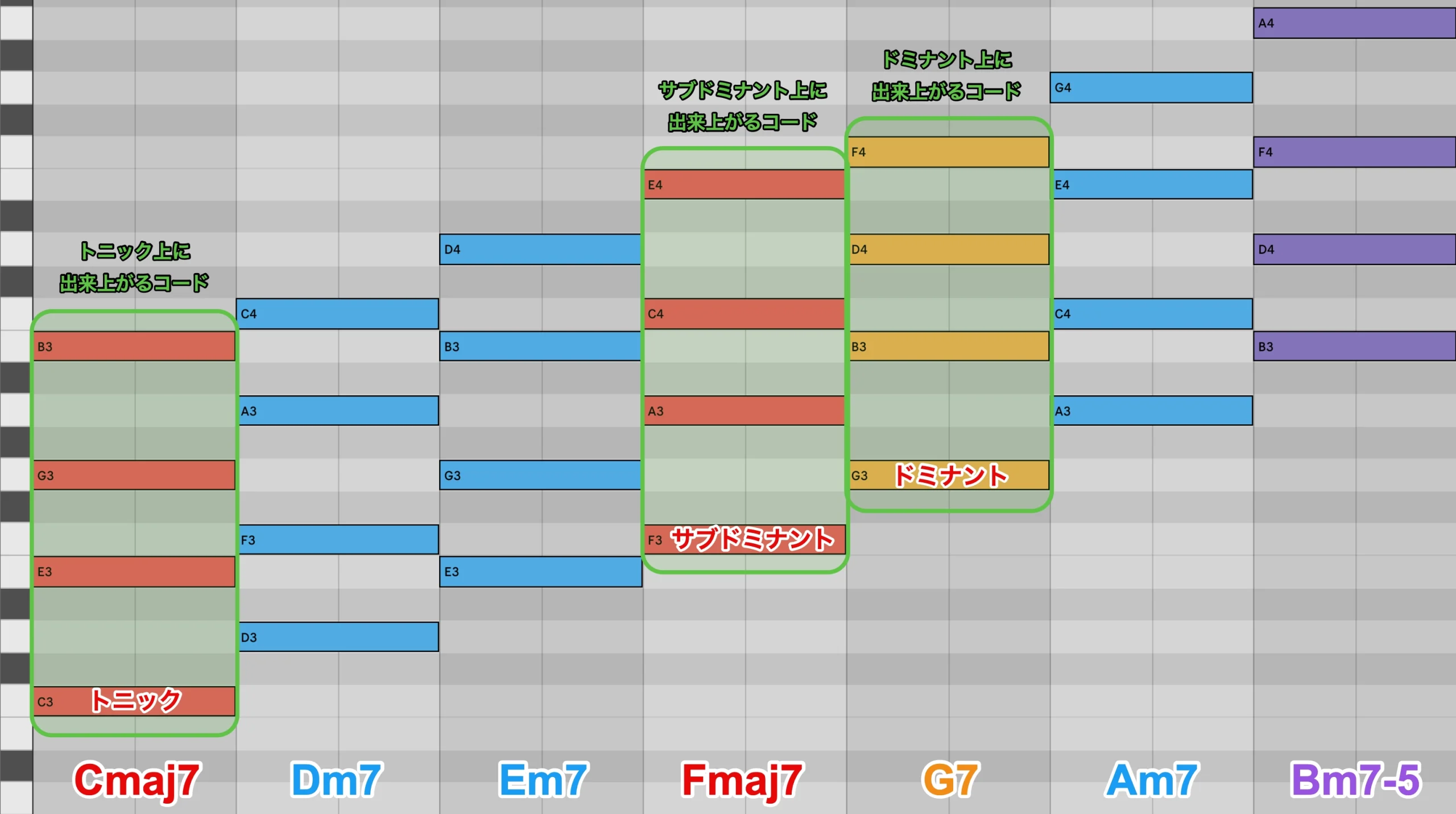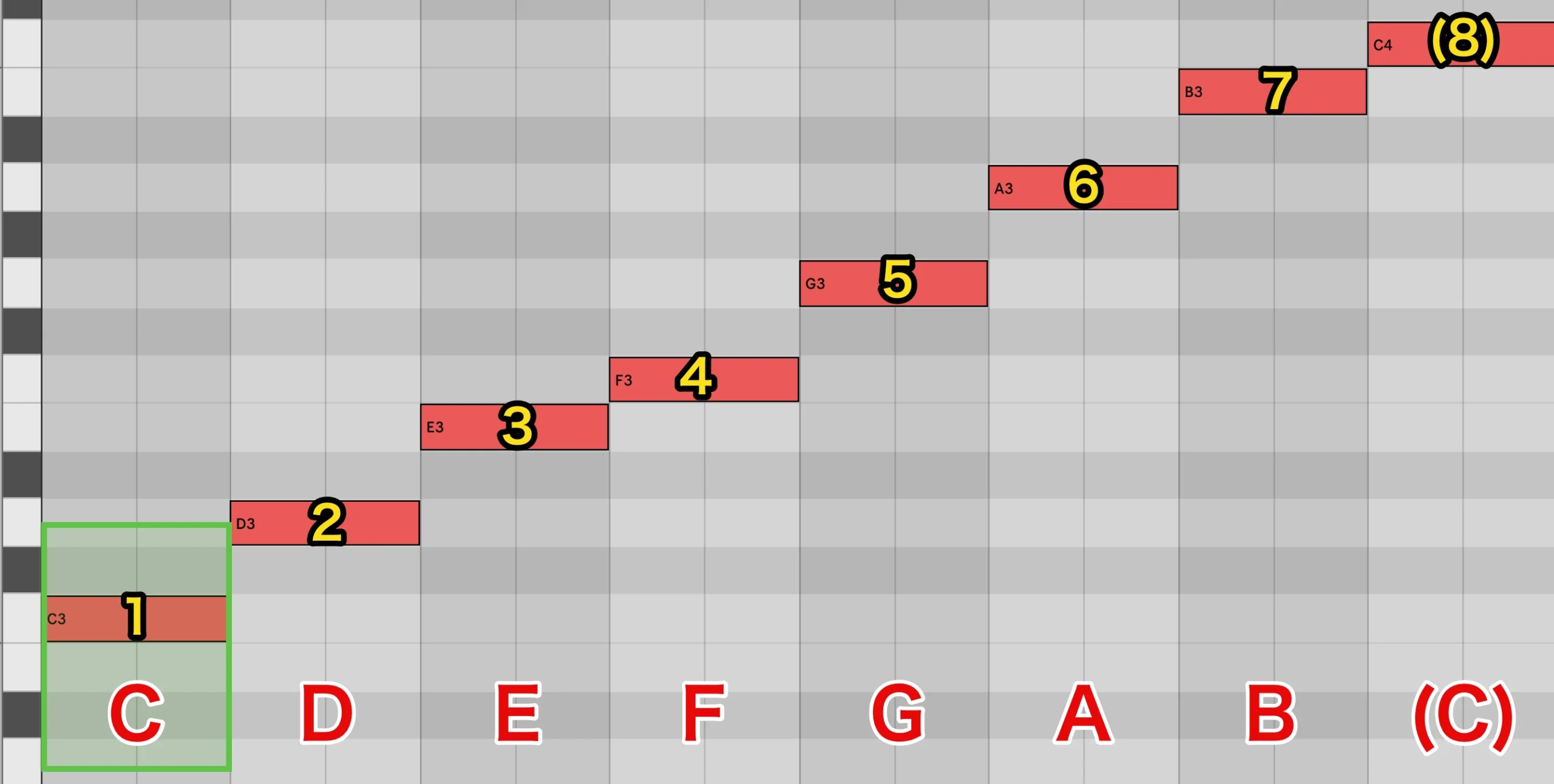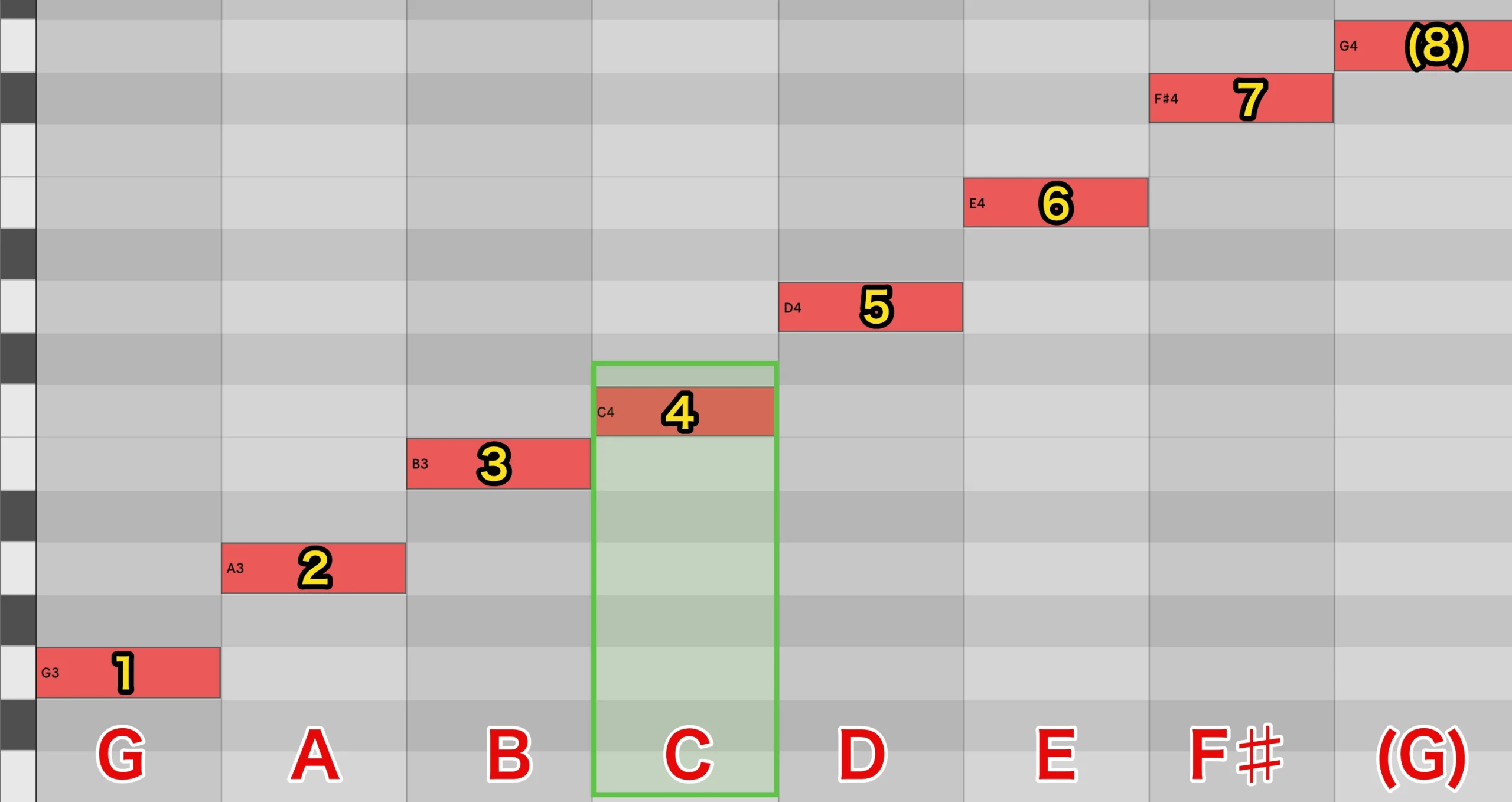主要三和音とその機能(ファンクション)①/音楽理論講座
コードの機能を理解して展開を作る

今回は、これまで学んできたメジャー・ダイアトニックコードを、どのように使えば”展開”が作れるのか、”ストーリー性”がある楽曲になるのかについて、さらに重要な知識に踏み込んでいきます。
まずはサンプルとして、以下の音源をお聴きください。
特定のキーのメジャーダイアトニックコードを何も考えずに並べてみましたが、なんだか落ち着かない感じがしますね。
実は、ダイアトニックコードの各コードには、”機能”=ファンクション(Function)があります。
そのため、機能を考慮せずにただ並べただけでは、同じところをぐるぐる回っているように聴こえたり、「起承転結」が不明瞭で聞きにくい展開になってしまうのです。
主要三和音の存在
今回は第一歩として、一番重要な3つのコード=主要三和音 (Primary chords)を押さえておきましょう。
まずは、前回学んだ各スケールディグリーネームを思い出してください。
今回も簡単なKey=Cをサンプルとします。
この中に、
- Tonic(トニック)
- Subdominant(サブドミナント)
- Dominant(ドミナント)
という言葉が出てきましたね。
この3つの言葉が、コード進行において非常に重要な意味を持ってきます。
そのことを念頭に置きながら先に進んでください。
次に、Cメジャースケールに音を積み重ね、Cメジャーのダイアトニックコードを作りましょう。
方法がわからない方は、過去の記事をご参照ください。
- 3和音
- 4和音
ここでも、「Tonic」「Subdominant」「Dominant」上に出来たコードに注目してください。
これらを、主要三和音(Primary chords)と呼びます。
また、これら3つには以下の機能(ファンクション)があり、それぞれの頭文字で略記されます。
名前はそのままですね。
- Tonic=トニック(コード) = T
- Subdominant =サブドミナント(コード)= SD(単に「S」と書くこともあります)
- Dominant = ドミナント(コード) = D
実は、他のコードでもこれらのファンクションに近い機能を持てるのですが、主要三和音の重要性は他を凌駕しています。
その意味では、「真のT・SD・D」と呼んでもいいかもしれません。
詳細については次回以降で取り上げますが、今回はひとまず、主要三和音は、スケール上のI・IV・Vをルートとするコード(3和音、4和音)だけという事を押さえておきましょう。
キーによって変わるコードのファンクション
最後に、初心者の方がよく間違うポイントを挙げておきます。
それは、コードそのものにファンクションがあるのではなく、各キーにおける位置付け(スケールディグリーの数字)にファンクションがあるということです。
前回と同じ画像で、「C」という音に注目してみましょう。
Cメジャースケールでは「C」は左から1番目です。
そこから作り上げたダイアトニック・コードは、
もちろん一番左の「I」。
つまり、トニック(主音)上に出来上がるのでトニック(コード)です。
一方で、Gメジャースケールでは、
「C」は4番目に位置します。
そこから作り上げたダイアトニック・コードは、
「IV」番目に位置するため、サブドミナントとなります。
このように、同じコードであってもキーによって違うファンクションを持つということですね。
今回はここまでとします。
少し予備知識的な内容が続いていますが、次回は実際に音で確認しながら、それぞれのファンクションの意味を掘り下げていきます。







